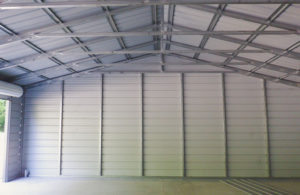
When it comes to construction, manufacturing, and engineering, the terms “metal” and “steel” are often used interchangeably.
However, it is essential to recognize that these two terms have distinct meanings and characteristics. While steel is a type of metal, not all metals are steel.
In this article, we will explore the key differences between metal and steel to shed light on their unique properties and applications.
About metals
Metal is a broad term that encompasses a wide range of chemical elements and alloys. Metals are known for their strength, durability, and ability to conduct heat and electricity. They are essential in numerous industries, including aerospace, automotive, electronics, and construction.
Examples of metals include aluminum, copper, iron, titanium, nickel, and more. Each metal possesses its own set of properties, making them suitable for specific purposes.
About steel
On the other hand, steel is a specific type of metal and is an alloy composed mainly of iron and carbon. The carbon content in steel gives it exceptional strength, making it one of the most widely used materials in the world.
Additionally, steel can be further alloyed with other elements to enhance its properties, such as chromium, nickel, or manganese. The versatility of steel is unrivaled, allowing engineers to tailor its characteristics for diverse applications.
Metal vs Steel
One crucial distinction between metal and steel lies in their corrosion resistance. While many metals are susceptible to corrosion, steel’s alloy composition, especially when combined with elements like chromium, imparts excellent corrosion resistance.
Stainless steel, for instance, is well-known for its ability to resist rust and maintain its integrity even in harsh environments, making it ideal for kitchen utensils, medical equipment, and marine applications.
Another aspect where metal and steel differ is their malleability. Metals can vary significantly in malleability, with some being easily shaped and molded, while others are brittle and inflexible. Steel, due to its carbon content, can be hardened and tempered to provide greater strength or heat-treated to enhance specific properties. This makes it an ideal choice for constructing durable tools, machinery, and structural components.
Furthermore, the cost of metals and steel can differ significantly. The price of metals varies based on their availability, rarity, and extraction process. In contrast, steel’s widespread availability and mass production result in relatively lower costs, making it an economical choice for many applications.
Conclusion
While metal and steel share common characteristics, they are not synonymous. Metal is a general term encompassing a vast array of chemical elements and alloys, whereas steel is a specific type of metal alloy composed mainly of iron and carbon. Understanding the distinction between metal and steel is crucial for making informed decisions in various industries, where choosing the right material can significantly impact the success and durability of a project.